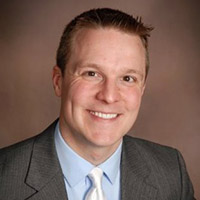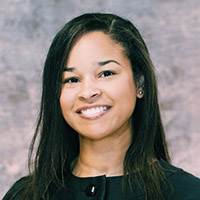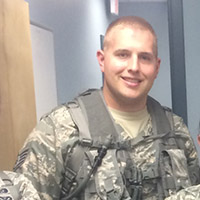State and Local Governments Adapt to Changes Spurred by Millennials
As the nation’s largest demographic group, millennials drive change in state and local governments — as employees and as citizens.
The generation, which the Pew Research Center defines as individuals born between 1981 and 1997, surpassed the number of baby boomers in 2015. And millennials are arriving at the workplace with a digital-first perspective that, for many officials, represents both a challenge and an opportunity.
According to “Harness the Potential of Millennials with Your Workforce Technology Strategy,” a February 2016 report from Forrester Research, these workers are well suited to test emerging technologies, and are leading the shift toward mobile work. As digital natives, millennials tend to embrace new technologies that might meet resistance from older workers.
And although the Deloitte Millennial Survey 2016 showed that two-thirds expect to leave their current job by 2020, most profess to be motivated by a focus on people and purpose over profits, an excellent fit for the service -oriented, meaningful work done at every level of government.
The Drive Toward Digital Government
The surge of millennials entering government puts “increasing pressure on CIOs to adopt a digital workplace mentality,” says Rick Holgate, a Gartner research director for the public sector.
Millennials often believe that government settings underutilize the digital skills they have to offer, Holgate says.
“It’s still largely a work in progress,” he says. “I wouldn’t actually give the millennials credit for effecting change yet, but they’ve certainly heightened awareness of the importance of adopting technology in a more creative, more flexible fashion in the government workplace.”
Those changes include flexible work arrangements, enabled by mobile technology that supports occasional or routine remote work, and a more personal user experience. The latter often means upgrading legacy technologies that linger in government offices as a result of slow procurement cycles and budgetary constraints.
Brian Kelley, CIO for Portage County, Ohio, knows those challenges firsthand. With 26 years in government service, he has witnessed the consumerization of IT. “Twenty-five years ago, if you wanted to use really cool technology, you went to work,” he says. “Millennials coming into the workplace today, whether in government or the private sector, find themselves with technology that predates their birth.”
To fully leverage the skills of his workforce, Kelley pursues mobile applications and technologies, and turned to the cloud as a resource for data storage and applications.
Millennials are not simply a growing proportion of the government workforce; they also make up an increasing share of the citizenry that workforce serves. Both Portage County Treasurer Brad Cromes and Ryan Shackelford, the county’s director of homeland security and emergency management, put considerable thought into how their offices communicate with citizens.

Source: Pew Research Center, “Millennials Overtake Baby Boomers as America’s Largest Generation,” April 2016
Millennials Reimagine Citizen Outreach
“My first big initiative was to revamp our website,” Cromes says. He transformed it from a simple landing page to a comprehensive site that includes financial education resources, and paired the initiative with a social media campaign to help bring Portage County residents to the site. Shackelford oversaw the launch of an emergency management app in late 2015. It lets him send push notifications to the app’s users, among other functionalities.
He takes a multichannel approach, using everything from Facebook and Twitter to traditional print media and TV news, to ensure that everyone, regardless of their level of technological savvy, gets what they need.
“We have all these systems in place to ensure we get information to all platforms and reach as much of our population as possible,” says Shackelford.
In James City County, Va., County Administrator Bryan Hill is also experimenting with how to best reach constituents.
“We have redone our website to allow for information to be pushed out to your mobile devices, to your computer desktop, to your email — however you want to set it up,” says Hill.
His office, which once relied on printed booklets and bulletins, now uses videos to share information with county residents.
Modern Communication Needs Strong Signals
Expanding use of mobile technology in Portage County has led to other upgrades.
“We replaced our entire network with new Cisco switches, firewall, a VPN and routers to provide faster and more robust service,” Kelley says. “The refresh allowed us to increase network traffic in our data center to 10 gigabits, and 1Gb from the desktop throughout all of our main facilities.”
It’s all a part of his plan to ensure that new hires can work to their strengths.
“Millennials were literally born with technology in their hand,” he says. “What’s important is that we provide them with the tools that they need, the access that they need, get the latest and greatest technology so that they’re able to leverage their skills and capabilities to the fullest.”
‘The OS of Democracy’
For the state of California, meeting the demands of a millennial citizenry starts with hiring them.
“The goal is to create a state workforce that looks like the rest of California,” says Brian Ferguson, deputy director of public affairs for the Department of General Services.
With 40 percent of state employees within five years of retirement, the state completely revamped its civil service hiring to attract a broad range of Californians.
“We wanted to upgrade the operating system of our democracy,” Ferguson says.
Gartner’s Holgate agrees: “Bringing people into government who haven’t worked a long time for government — bringing a new energy and a new mindset into government — that’s pretty strongly encouraging about the possibilities of transforming the way government interacts with society,” he says.
“It presents a lot of opportunities.”
Open Data and Cloud-Based Collaborations
The California Innovation Lab is designed to facilitate millennials’ participation in government, says Christie Borchin, deputy director of professional development for the Department of Technology. The lab opened in early 2016 and resides in CalCloud, a dedicated private cloud operated by department’s Office of Technology Services. Developers will use Red Hat OpenShift to engage with the volumes of data available in the lab.
“The Innovation Lab utilizes open data,” says Borchin. “Other departments can come in and use our lab to develop something quicker, cheaper, faster. It’s something that is brand new, and I’m not sure even the private sector has done that.”
The lab also provides a unique opportunity for citizens of all generations to partner with government, says Teala Schaff, deputy director of external affairs for the Department of Technology.
“Citizens can work with the state, with government, to develop solutions that can then be developed into enterprise solutions for the whole state,” says Schaff. Projects and programs like these represent the future of government — and places where millennials are bound to shine.












